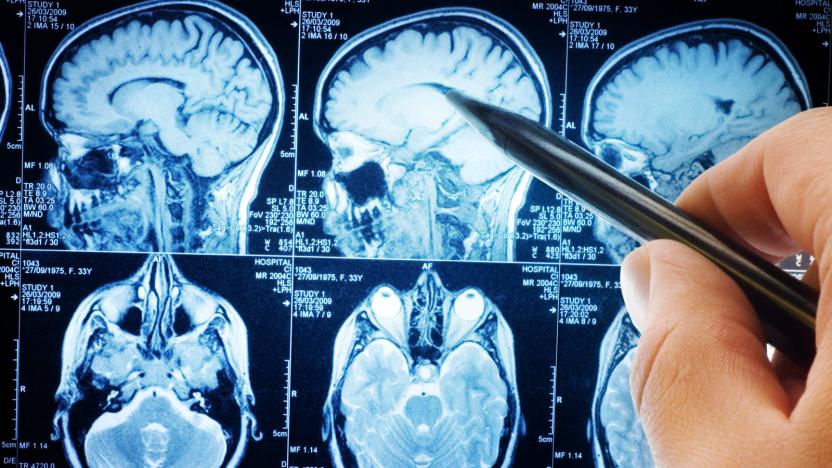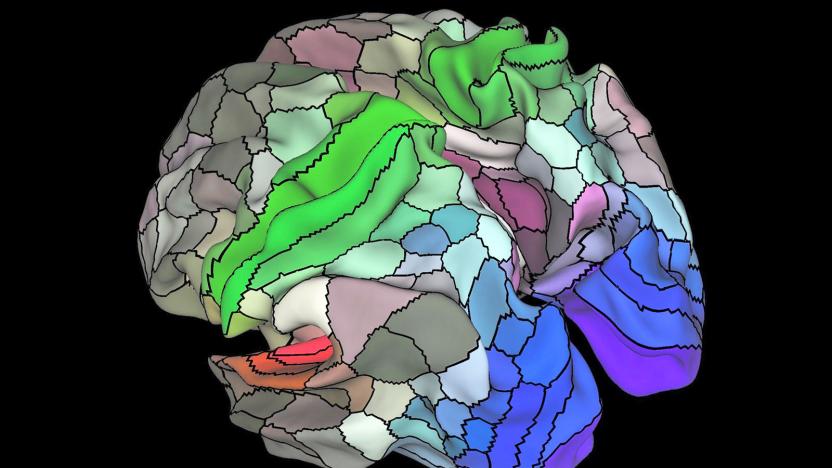HumanConnectomeProject
Latest

Fluctuating brain networks help you handle complex tasks
Researchers already know that the human brain isn't static, but it's now clear just how dynamic the mind can be. A Stanford University team has discovered that the networking between brain regions will fluctuate depending on the complexity of tasks. If you're at rest, your brain's components are relatively isolated. Handle a complicated activity, however, and the level of networking ramps up. The more interconnected your brain is, the better your performance -- in a memory test, those with the most integrated brains were the quickest and most accurate.

Scientists map human brain in more detail than ever before
Scientists are still using a 100 year-old map to identify 83 known regions of the brain, but that's about to change. A team from Washington University in St. Louis, working with the Human Connectome Project, has plotted 97 new areas of our gray matter, bringing the total to 180. The updated map will help researchers better explore the brain and may lead to breakthroughs in autism, schizophrenia and other neurological disorders. "If you want to find out what the brain can do, you have to understand how it is organized and wired," says study leader Dr. David Van Essen.

Human Connectome Project maps brain's circuitry, produces super trippy graphics
A team of researchers at the Human Connectome Project (HCP) have been carving up mice brains like Christmas hams to find out how we store memories, personality traits, and skills -- the slices they're making, though, are 29.4 nanometers thick. The end goal is to run these tiny slices under a microscope, create detailed images of the brain, and then stitch them back together, eventually creating a complete map of the mind, or connectome. The team, comprised of scientists at Harvard, UCLA, University of Minnesota, and Washington University, is still a long way from cutting up a human brain, partially due to storage limitations -- a picture of a one-millimeter cube of mouse brain uses about a petabyte of memory. A human brain would require millions of petabytes, and an indefinite number of years, causing speculation that the payoff isn't worth the effort -- although, we're convinced the HCP wallpaper possibilities are totally worth it.


